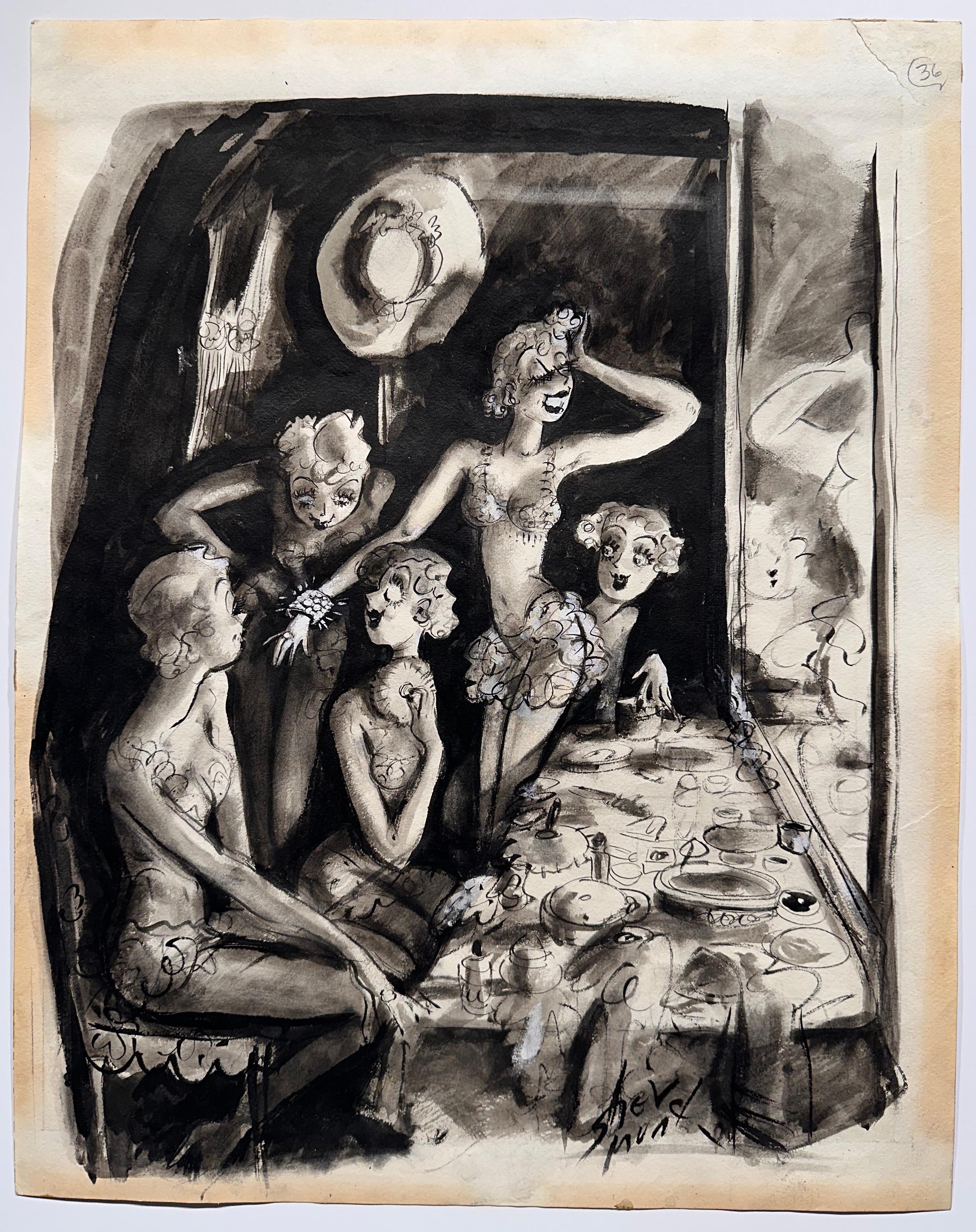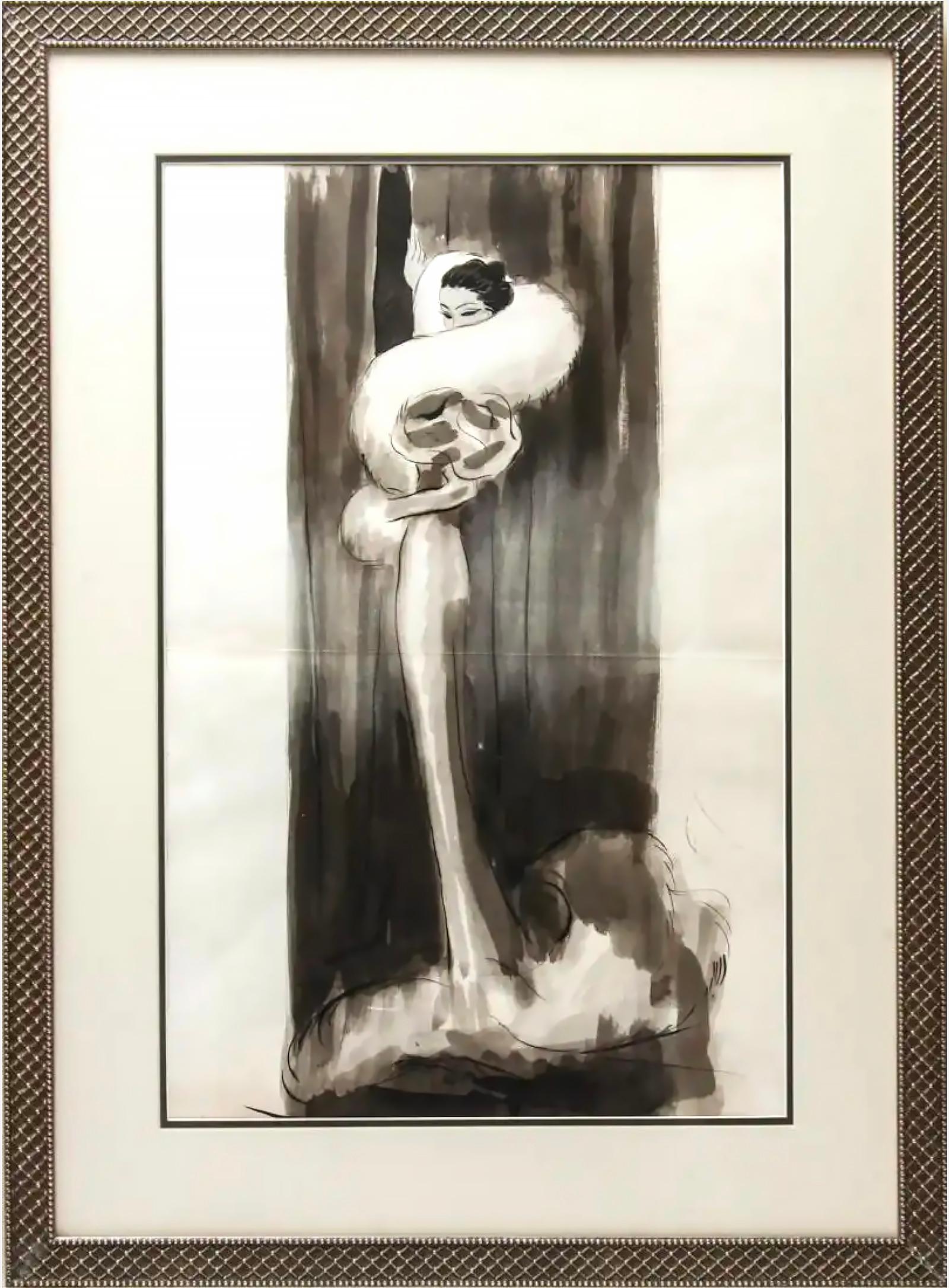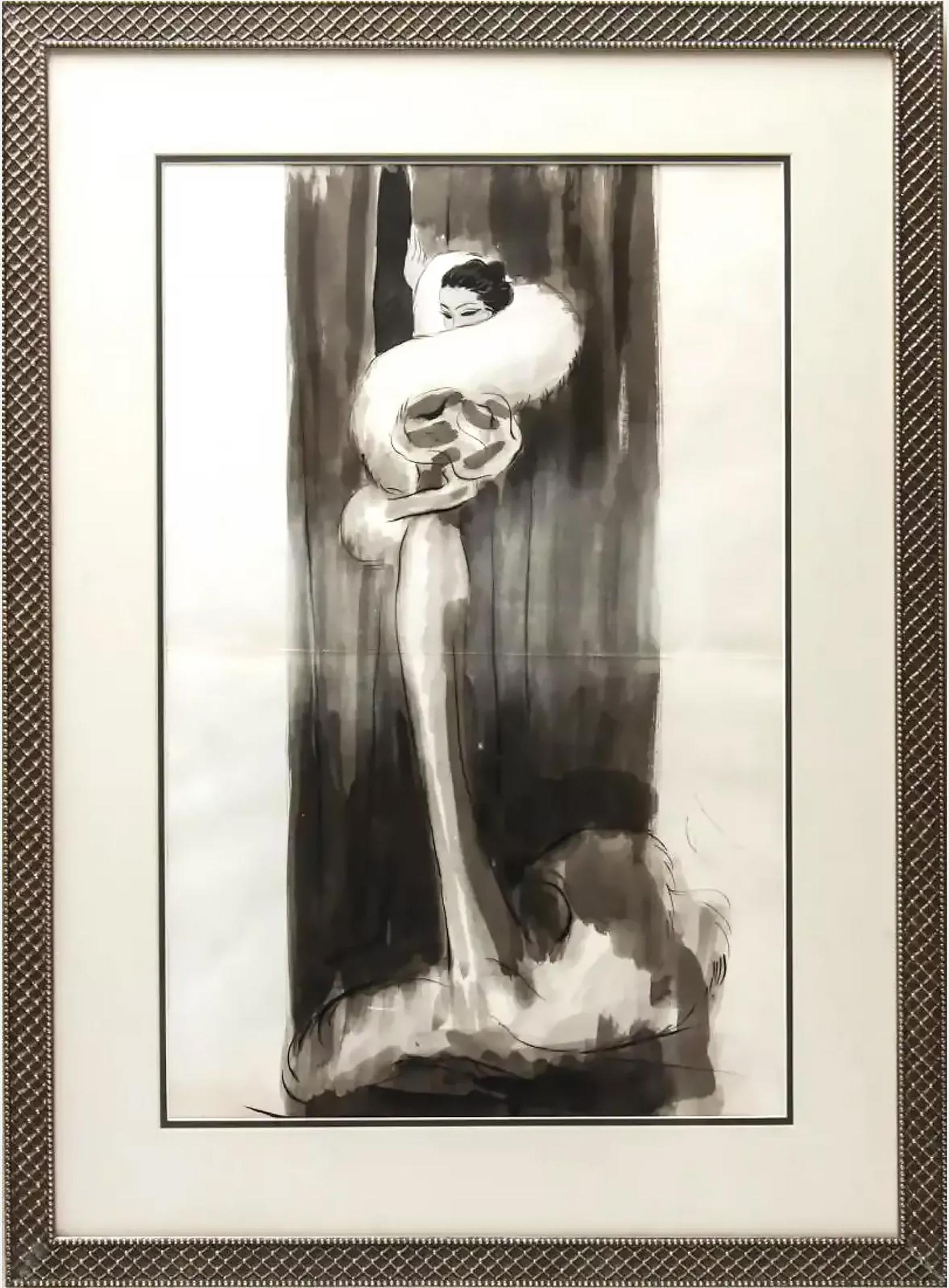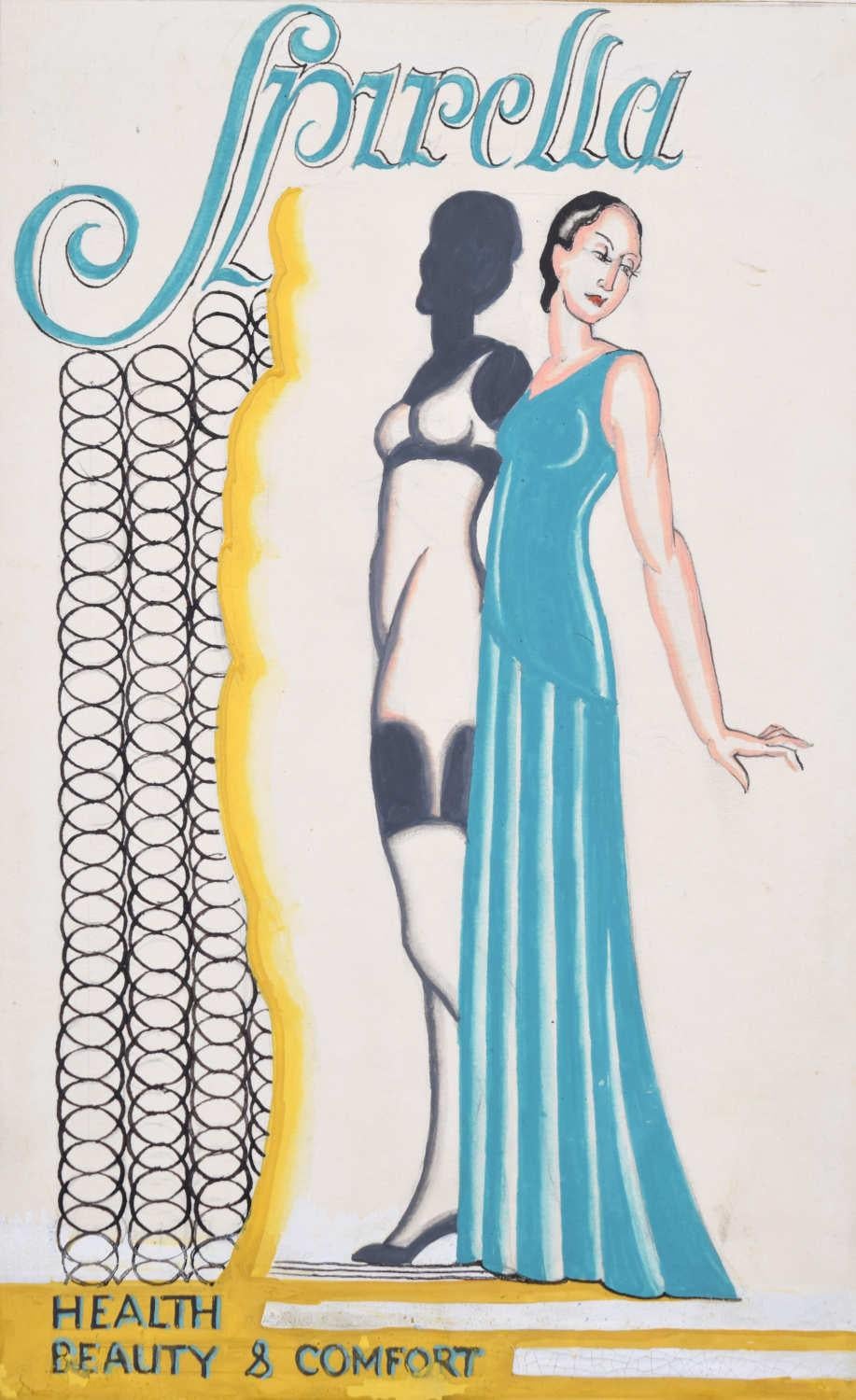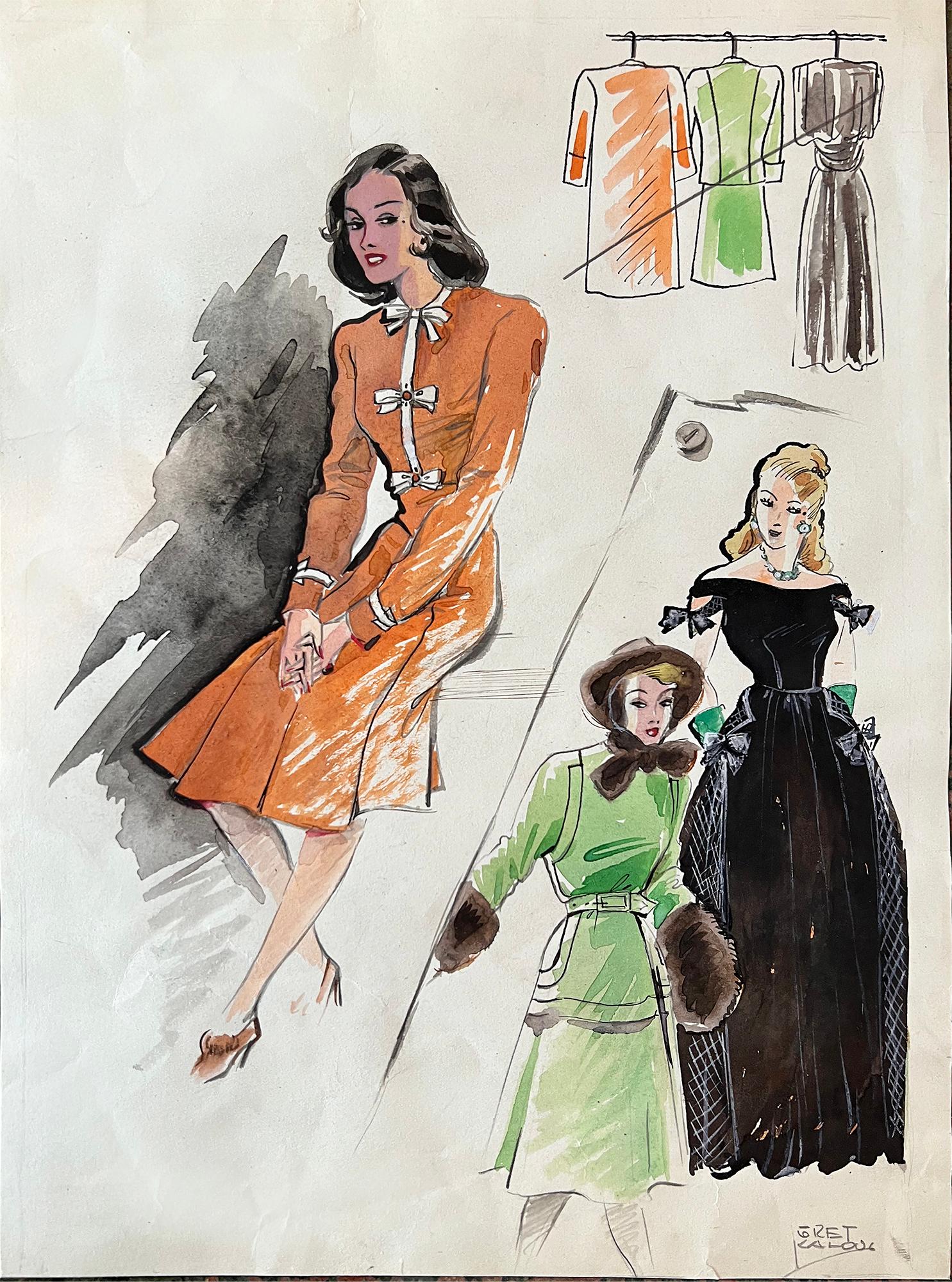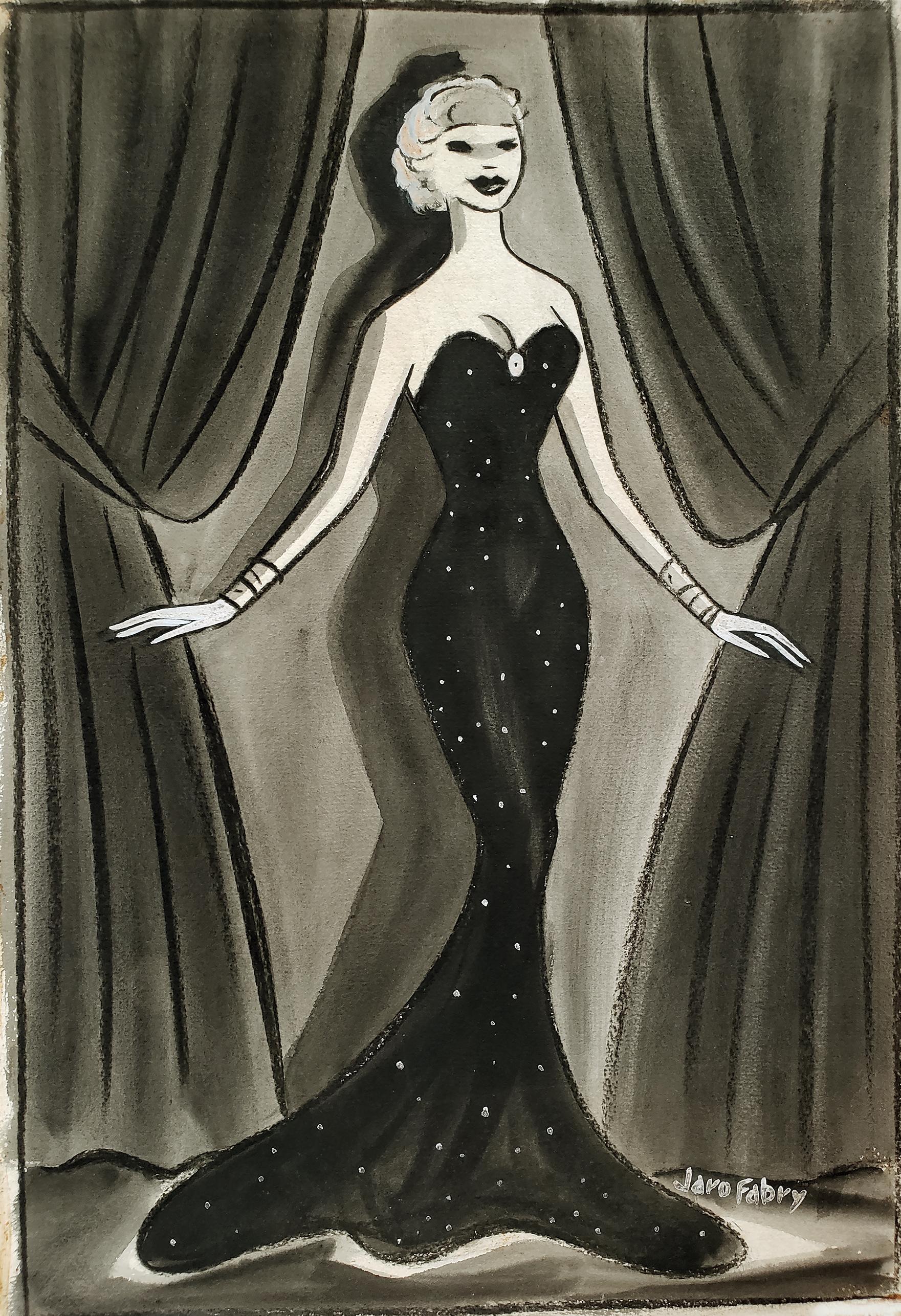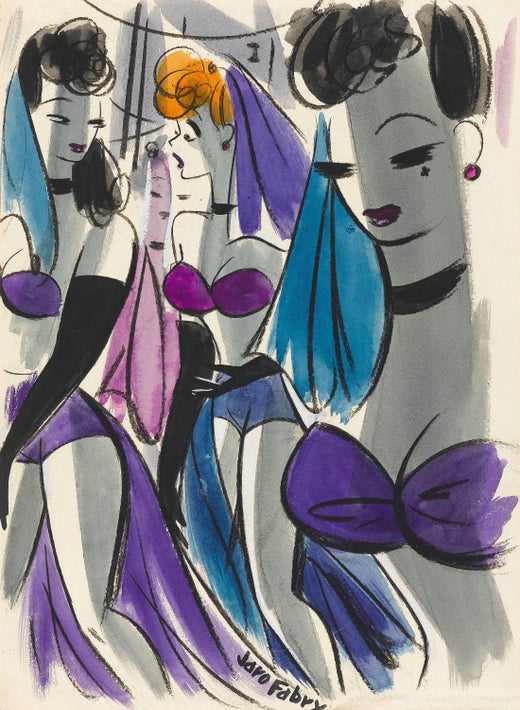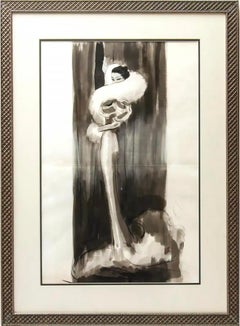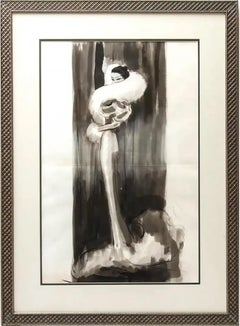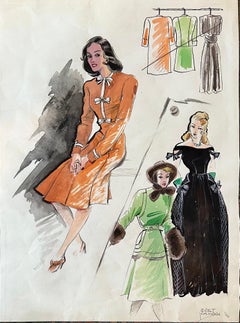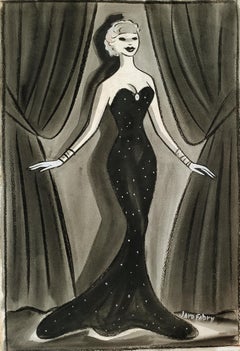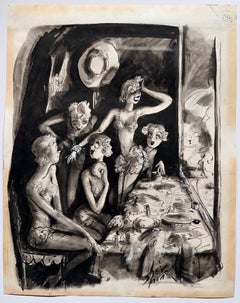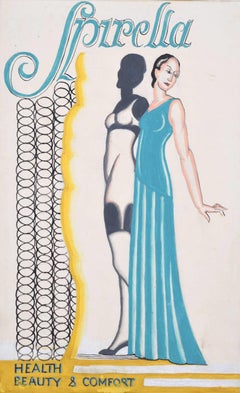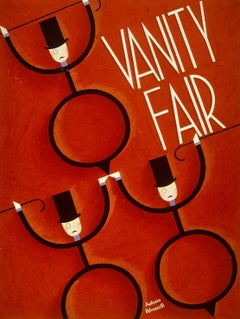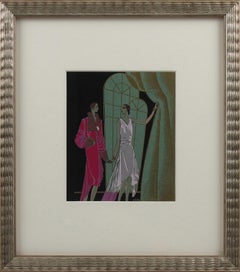Items Similar to Art Deco Glamour illustration, Golden Age of Hollywood
Want more images or videos?
Request additional images or videos from the seller
1 of 5
Jaro FabryArt Deco Glamour illustration, Golden Age of HollywoodCirca 1930 -1940
Circa 1930 -1940
$14,000
£10,755.68
€12,358.15
CA$19,692.73
A$22,123.90
CHF 11,559.77
MX$270,032.60
NOK 146,775.37
SEK 138,158.09
DKK 92,221.15
About the Item
Caption: "He proposed this morning right
after the alarm clock went off."
From the Estate of Charles Martignette
Signed lower center
unframed
- Creator:Jaro Fabry (1912 - 1953, American)
- Creation Year:Circa 1930 -1940
- Dimensions:Height: 15 in (38.1 cm)Width: 10.75 in (27.31 cm)
- Medium:
- Movement & Style:
- Period:
- Condition:unframed.
- Gallery Location:Miami, FL
- Reference Number:1stDibs: LU38531460553
Jaro Fabry
Jaro Fabry was an artist and illustrator, working primarily in Hollywood from the 1930s until his death. He was a brilliant illustrator with a defined style of his own. There is not a brushstroke out of place in his works that appear loosely rendered. He was best known for his depiction of the Golden Age of Hollywood. Fabry’s work had appeared in The New Yorker, Collier's and many other popular magazines.

About the Seller
4.9
Gold Seller
Premium sellers maintaining a 4.3+ rating and 24-hour response times
Established in 2005
1stDibs seller since 2016
115 sales on 1stDibs
Typical response time: 1 hour
- ShippingRetrieving quote...Shipping from: Miami, FL
- Return Policy
Authenticity Guarantee
In the unlikely event there’s an issue with an item’s authenticity, contact us within 1 year for a full refund. DetailsMoney-Back Guarantee
If your item is not as described, is damaged in transit, or does not arrive, contact us within 7 days for a full refund. Details24-Hour Cancellation
You have a 24-hour grace period in which to reconsider your purchase, with no questions asked.Vetted Professional Sellers
Our world-class sellers must adhere to strict standards for service and quality, maintaining the integrity of our listings.Price-Match Guarantee
If you find that a seller listed the same item for a lower price elsewhere, we’ll match it.Trusted Global Delivery
Our best-in-class carrier network provides specialized shipping options worldwide, including custom delivery.More From This Seller
View AllArt Deco Vogue Magazine Illustration
By Edouard Garcia Benito
Located in Miami, FL
Art Deco "Mademoiselle X" story illustration
for Vogue February 1, 1934, watercolor and ink, reverse signed in pencil "Benito for Madame X," pencil inscription "Feb.1, 1934 / Page 51 / 316," accompanied by corresponding issue of Vogue magazine...
Category
1930s Art Deco Figurative Drawings and Watercolors
Materials
Watercolor
Vogue Magazine Illustration
Located in Miami, FL
"Mademoiselle X" story illustration
for Vogue February 1, 1934, watercolor and ink, reverse signed in pencil "Benito for Madame X," pencil inscription "Feb.1, 1934 / Page 51 / 316," ...
Category
1930s Art Deco Figurative Drawings and Watercolors
Materials
Paper, Ink, Watercolor
Mid-Century Fashion Designs by Austrian Female Illustrator
Located in Miami, FL
Mid-Century fashion watercolors by accomplished Austrian Female Illustrator. Fashion Gret Kalous-Scheffer (1892 Vienna - 1975 Vienna) was a daughter of the renowned Austrian painter...
Category
1950s Feminist Figurative Drawings and Watercolors
Materials
Watercolor, Pencil
Glamorous Performer in Art Deco Black Evening Dress, Golden Age of Hollywood
By Jaro Fabry
Located in Miami, FL
work is matted but not framed.
Golden Age of Hollywood no illustrator chronicled the great stars, pin-ups and good girls better than Jaro Fabr...
Category
1930s Art Deco Figurative Paintings
Materials
Crayon, Watercolor, Gouache
Art Deco Flapper Illustration
Located in Miami, FL
Original Vintage 1920's Ink and Watercolor Fashion Illustration by listed New England artist Harriette (Nutting) Cooper (1901 - 2002).
The illustration depicts a lovely young flappe...
Category
1920s Art Deco Figurative Drawings and Watercolors
Materials
Watercolor, Pencil
Art Deco Pulp cover or pin-up magazine cover
By Peter Driben
Located in Miami, FL
Pulp cover or pin-up magazine cover
signed lower left
foxing and toning throughout
oil and mixed media on board
work is framed
Category
1920s Art Deco Figurative Paintings
Materials
Oil, Mixed Media, Board
You May Also Like
Life Magazine Art Deco Showgirls Cartoon
Located in Wilton Manors, FL
Barbara Shermund (1899-1978). Showgirls Cartoon for Life Magazine, 1934. Ink, watercolor and gouache on heavy illustration paper, matting window measures 16.5 x 13 inches; sheet measures 19 x 15 inches; Matting panel measures 20 x 23 inches. Signed lower right. Very good condition with discoloration and toning in margins. Unframed.
Provenance: Ethel Maud Mott Herman, artist (1883-1984), West Orange NJ.
For two decades, she drew almost 600 cartoons for The New Yorker with female characters that commented on life with wit, intelligence and irony.
In the mid-1920s, Harold Ross, the founder of a new magazine called The New Yorker, was looking for cartoonists who could create sardonic, highbrow illustrations accompanied by witty captions that would function as social critiques.
He found that talent in Barbara Shermund.
For about two decades, until the 1940s, Shermund helped Ross and his first art editor, Rea Irvin, realize their vision by contributing almost 600 cartoons and sassy captions with a fresh, feminist voice.
Her cartoons commented on life with wit, intelligence and irony, using female characters who critiqued the patriarchy and celebrated speakeasies, cafes, spunky women and leisure. They spoke directly to flapper women of the era who defied convention with a new sense of political, social and economic independence.
“Shermund’s women spoke their minds about sex, marriage and society; smoked cigarettes and drank; and poked fun at everything in an era when it was not common to see young women doing so,” Caitlin A. McGurk wrote in 2020 for the Art Students League.
In one Shermund cartoon, published in The New Yorker in 1928, two forlorn women sit and chat on couches. “Yeah,” one says, “I guess the best thing to do is to just get married and forget about love.”
“While for many, the idea of a New Yorker cartoon conjures a highbrow, dry non sequitur — often more alienating than familiar — Shermund’s cartoons are the antithesis,” wrote McGurk, who is an associate curator and assistant professor at Ohio State University’s Billy Ireland Cartoon Library & Museum. “They are about human nature, relationships, youth and age.” (McGurk is writing a book about Shermund.
And yet by the 1940s and ’50s, as America’s postwar focus shifted to domestic life, Shermund’s feminist voice and cool critique of society fell out of vogue. Her last cartoon appeared in The New Yorker in 1944, and much of her life and career after that remains unclear. No major newspaper wrote about her death in 1978 — The New York Times was on strike then, along with The Daily News and The New York Post — and her ashes sat in a New Jersey funeral home...
Category
1930s Art Deco Figurative Paintings
Materials
Ink, Gouache
$3,250 Sale Price
35% Off
Spirella, Health, Beauty & Comfort, vintage illustration by A. E. Halliwell
Located in London, GB
A. E. Halliwell (1905-1987)
Spirella, Health, Beauty & Comfort
Gouache
26 x 15 cm
Provenance: Family of the artist
A.E. Halliwell (1905–1986) was a British artist, illustrator, a...
Category
1930s Art Deco Figurative Paintings
Materials
Ballpoint Pen
Original Painting. Vanity Fair Illustration Proposal. Art Deco Modern 1930s
By Antonio Petruccelli
Located in New York, NY
Original Painting. Vanity Fair Illustration Proposal. Art Deco Modern 1930s
Antonio Petruccelli (1907 - 1994)
Vanity Fair
Illustration proposal, c 1930’s
18 X 13 3/4 inches (sight)
...
Category
1930s American Modern Figurative Paintings
Materials
Gouache, Board
Original French Art Deco Gouache Illustration Drawing by J. Hilly
Located in Atlanta, GA
An original Art Deco illustration hand-painted with ink and gouache on paper. The drawing features two elegant women with large windows and drapery in the background. This image was ...
Category
1930s Art Deco Figurative Drawings and Watercolors
Materials
Paper, Ink, Gouache
Lovely to Look at, Art Deco Lithograph by Philippe Henri Noyer
By Philippe Henri Noyer
Located in Long Island City, NY
Philippe Henri Noyer, French (1917 - 1985) - Lovely to Look at, Year: circa 1980, Medium: Lithograph, signed and numbered in pencil, Edition: 88/250, Size: 28.5 x 41 in. (72.39 x...
Category
1980s Art Deco Interior Prints
Materials
Lithograph
Poupee Espagnole
By Zig (Louis Gaudin)
Located in New York, NY
Poupee Espagnole. Costume design for the entertainer Mistinguette for her production at the Moulin Rouge in Paris. Watercolor. Signed Zig. Ca 1928, . Framed.
Provenance: Nephew of M...
Category
1920s Art Deco Figurative Drawings and Watercolors
Materials
Watercolor
More Ways To Browse
Glamour Art
Golden Age Of Illustration
Golden Age Of Hollywood
Glamour Paintings
Alarm Clocks
Vintage Alarm Clock
Estate Clock
Alarm Clock 1930
Paintings Of Japan
Red Abstract Paintings
Mexican Artists
Mexico Artist
American Landscape Oil Paintings
Paintings Of Spain
Geometric Shapes Art
Film Photographs
Portfolios Of Prints
Painting On Glass
